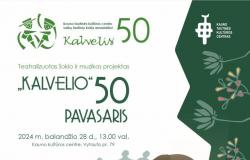The Lithuanian Zoo shares good news – visitors can get to know one more species – the wild zebras. This is an extremely important event not only for the Lithuanian zoo community, this animal subspecies is included in the EAZA ex situ program (EEP), which aims to preserve healthy populations of animals kept in captivity. By keeping these animals in the zoo, we have a unique opportunity to contribute to the long-term survival of the species. What makes this subspecies special?
The barren savannah zebra (Equus quagga borensis) is a subspecies of zebra found in the northern parts of East Africa. Each zebra’s pattern is unique. The hatchlings have reddish-brown stripes that gradually darken to black as the hatchling grows. In nature, this unique feature helps them camouflage themselves and thus confuse predators. According to scientists, the pattern of these savannah animals may help them regulate their body temperature and protect them from the sun’s harmful rays. It is interesting that newborn cubs can stand after 6 minutes, walk after 20 minutes, and run after forty minutes. The age of the zebra brothers Pomelos and Janikos who settled in the Lithuanian zoo is one year. Adult zebras can run up to 65 km/h. speed. Animals spend most of the day (about 60%) feeding. The knee joints of zebras allow the animal to remain in a standing position for a long time, so individuals of this species can sleep while standing.
In cooperation with the European Association of Zoos and Aquariums (EAZA), which aims to preserve animal species, the settlers came from the Dvůr Králové Zoo in the Czech Republic. You can see these unique, unusual-looking animals right now, in the lower part of the Lithuanian Zoo. The completed renovation of the Lithuanian zoo allows to ensure better conditions for keeping animals, therefore, for these zebras, like other animals kept in the Lithuanian zoo, a special nutrition plan corresponding to the species has been adapted and an individual employment program has been created. According to the specialists of the Lithuanian Zoo, the employment of animals is a priority activity in zoos. Encouraging natural behavior is the most important goal of animal occupation enrichment. Occupancy measures are applied to each species or even animal individually. Whether it’s foraging or curiosity games that stimulate different senses – smell, sight or taste. This year is the last chance to donate your 1.2% GPM to contribute to the enrichment of animal welfare in our zoo. Your support will contribute to animal occupations that not only relieve animals of boredom, but also stimulate their physical and mental activity, providing tasty and interesting entertainment.
We, the Lithuanian Zoo, are committed to the welfare of animals and want to enrich their daily lives. We invite you to contribute to this noble mission!
Donate your 1.2% GPM to the Lithuanian Zoo! https://www.zoosodas.lt/remejams/
We invite you to visit and see these zebras live!
You can purchase tickets at: https://bilietai.zoosodas.lt/ or at the box office of the Lithuanian Zoo.
Discover, know, save!
Tags: Zebras return Lithuanian zoo







